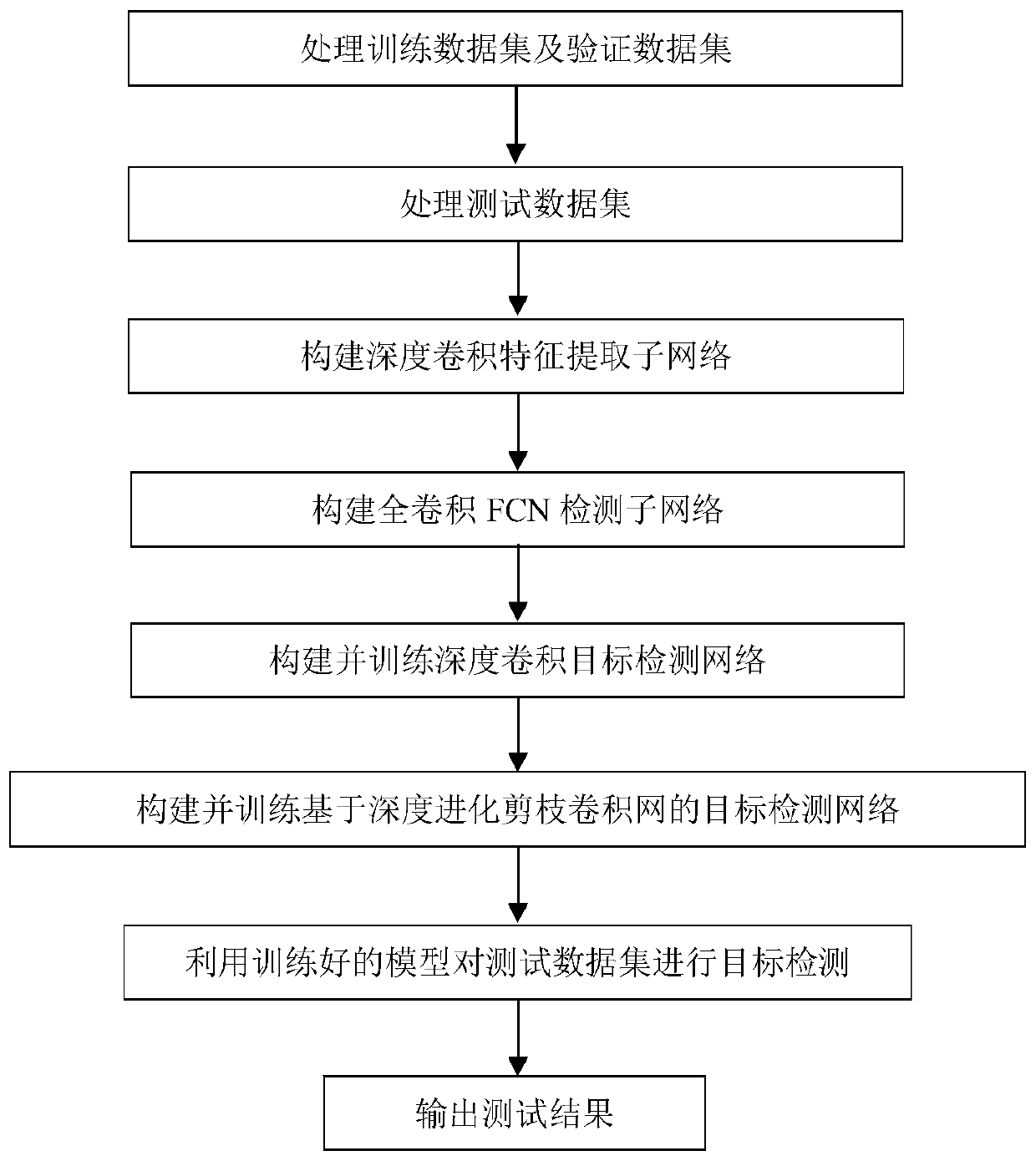Remote sensing image target detection method based on deep evolution pruning convolutional network
A target detection and depth convolution technology, applied in the field of image processing, can solve the problems affecting the computational complexity and computational speed of the model, difficult optical remote sensing image detection, and overall accuracy loss, so as to overcome the loss of model operation speed and reduce model parameters. amount, the effect of accelerating the convergence speed
- Summary
- Abstract
- Description
- Claims
- Application Information
AI Technical Summary
Problems solved by technology
Method used
Image
Examples
Embodiment 1
[0037] Remote sensing image target detection is an application that has attracted much attention in the field of remote sensing image processing and analysis, for example, to determine whether there are targets such as aircraft and ships in remote sensing images, and to identify, classify and accurately locate them. With the continuous development of satellite technology, the amount of existing optical remote sensing image data is becoming larger and larger, and compared with the vast sea area, the target size of aircraft and ships is small and sparse. Detecting objects accurately is a challenging task. The existing remote sensing image target detection technology often focuses on how to better learn the characteristic information of the target, and then improve the accuracy of target detection. However, due to the huge amount of data in remote sensing images and the huge amount of parameters in the network model, the current detection speed Extremely restricted.
[0038] The...
Embodiment 2
[0071] The remote sensing image target detection method based on depth evolutionary pruning convolutional network is the same as embodiment 1, step (3) describes the construction of deep convolutional feature extraction sub-network, and its specific steps are:
[0072] (3a) Build a depth-separable convolution anti-residual connection module: its module structure is, feature map input layer in the previous stage → 1×1 convolution layer → depth-separable convolution unit → point-by-point addition layer → current stage Feature map output layer.
[0073] In the anti-residual connection module, the 1×1 convolutional layer and the depth-separable convolution unit appear in groups, and the point-by-point addition layer is to combine the output feature map of the depth-separable convolution unit of the previous layer with the output feature map from the anti-residual connection The feature map of the module input layer is added point by point to form a feature processing layer.
[0074...
Embodiment 3
[0080] The remote sensing image target detection method based on depth evolutionary pruning convolution network is the same as embodiment 1-2, the depth separable convolution unit described in step (3a), see figure 2 , its unit structure is, feature map input layer in the previous stage → 3×3 deep convolution layer → first batch normalization layer → ReLU activation function layer → 1×1 pointwise convolution layer → second batch normalization layer Normalization layer → linear activation function layer → output feature layer.
[0081] The depthwise separable convolution unit integrates the standard convolution into depthwise convolution and pointwise convolution to realize the space and channel separation of features and separate processing, thereby greatly reducing the amount of parameters and computational complexity.
[0082] The activation function after the 1×1 point-by-point convolution layer no longer uses the ReLU activation function, but uses a linear activation func...
PUM
 Login to View More
Login to View More Abstract
Description
Claims
Application Information
 Login to View More
Login to View More - R&D
- Intellectual Property
- Life Sciences
- Materials
- Tech Scout
- Unparalleled Data Quality
- Higher Quality Content
- 60% Fewer Hallucinations
Browse by: Latest US Patents, China's latest patents, Technical Efficacy Thesaurus, Application Domain, Technology Topic, Popular Technical Reports.
© 2025 PatSnap. All rights reserved.Legal|Privacy policy|Modern Slavery Act Transparency Statement|Sitemap|About US| Contact US: help@patsnap.com



